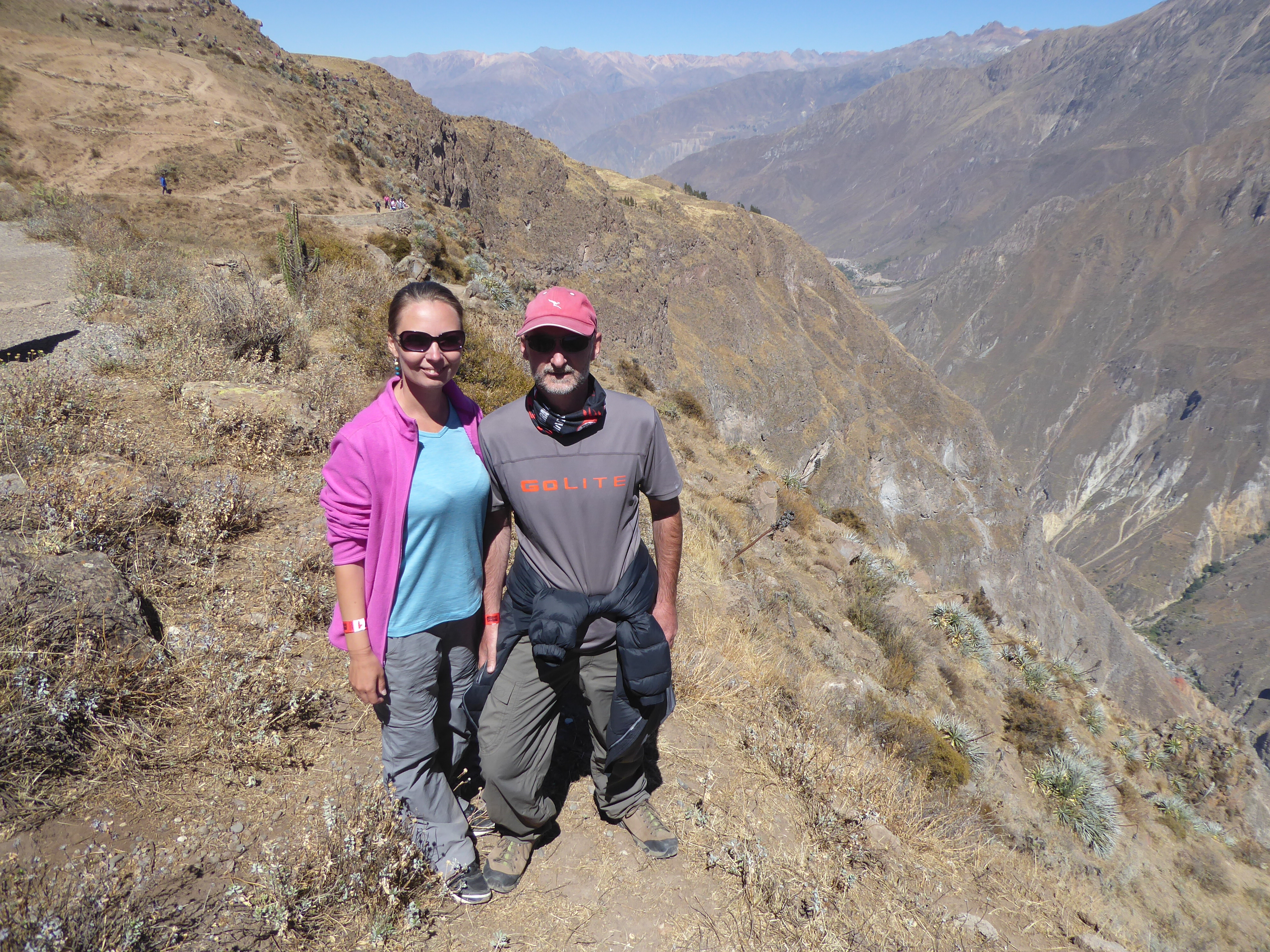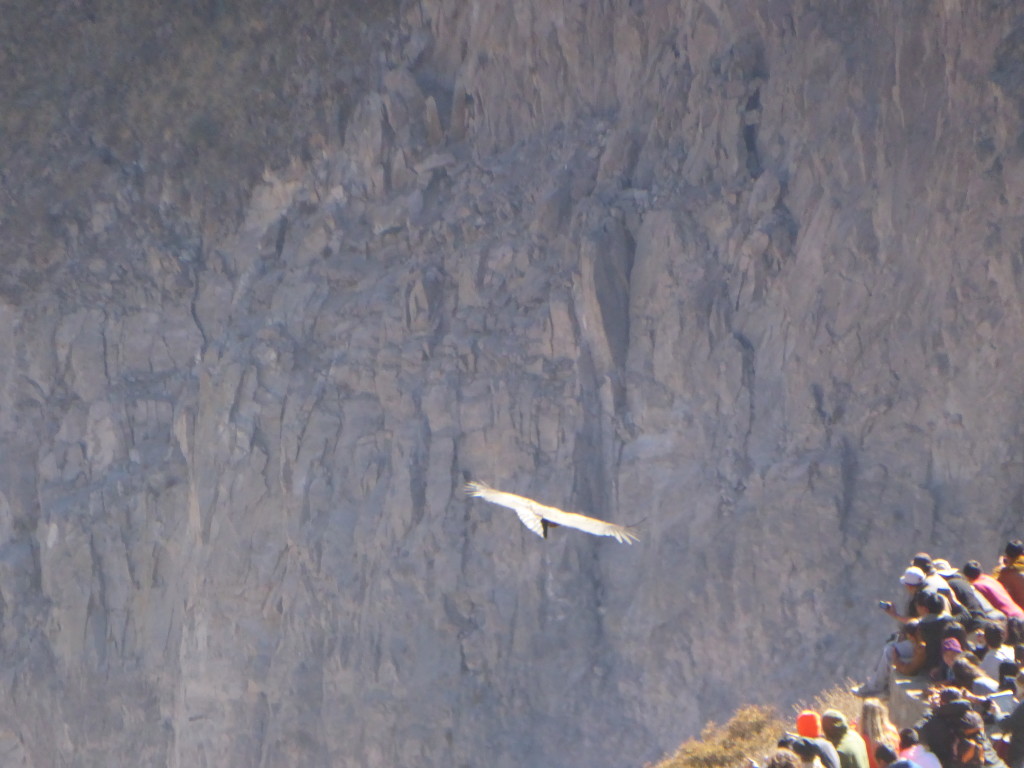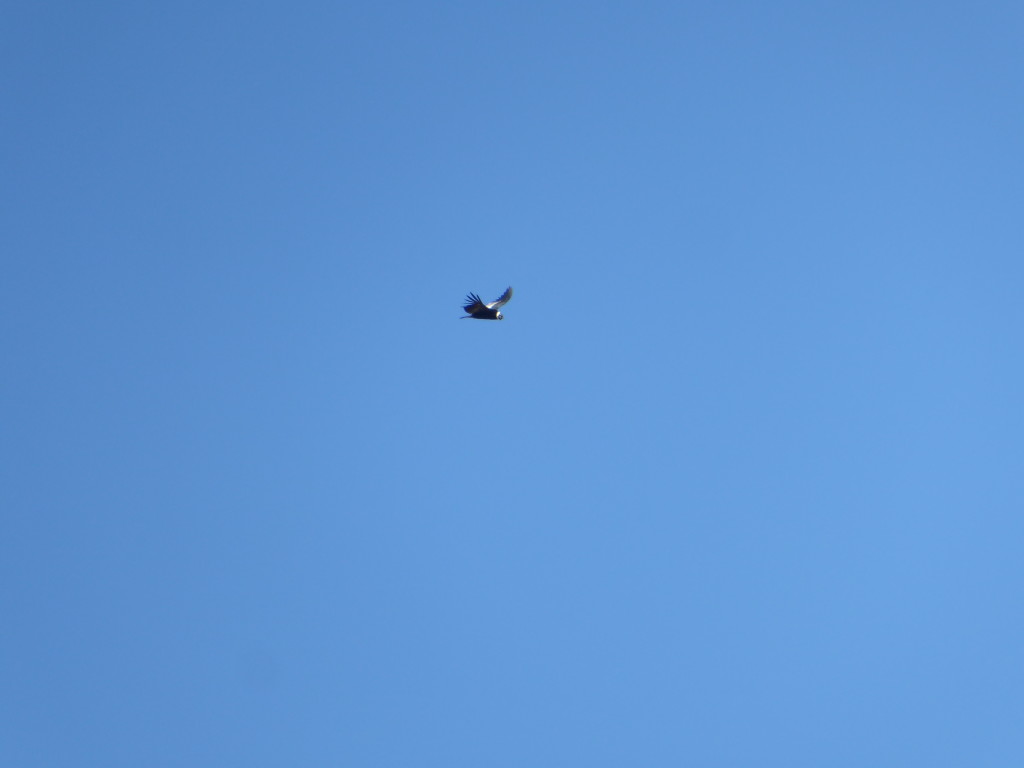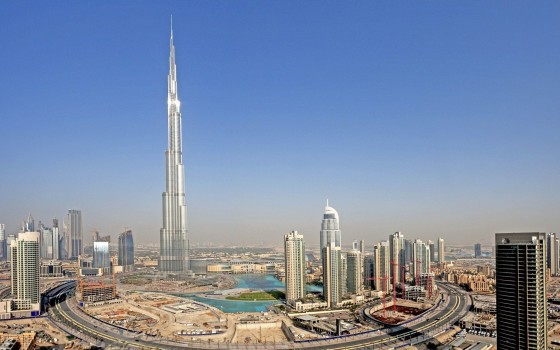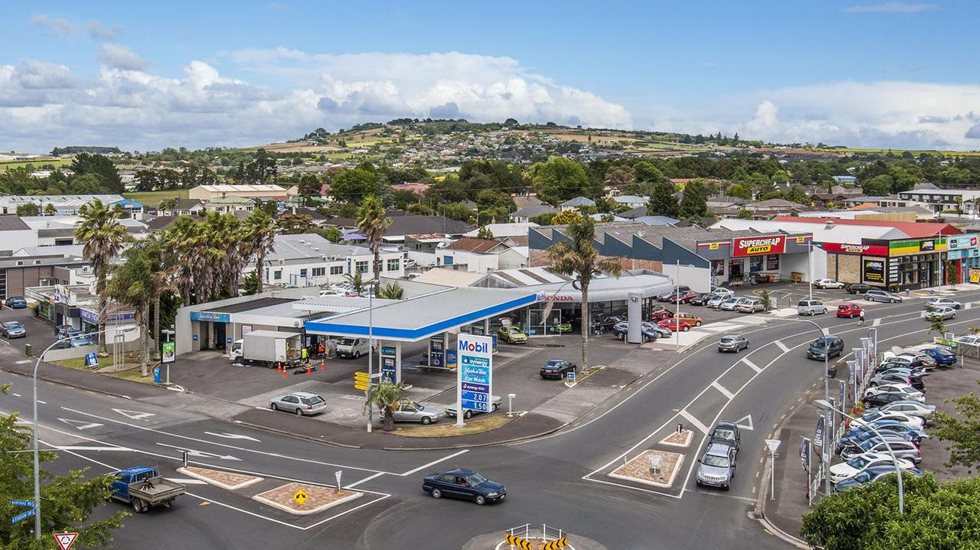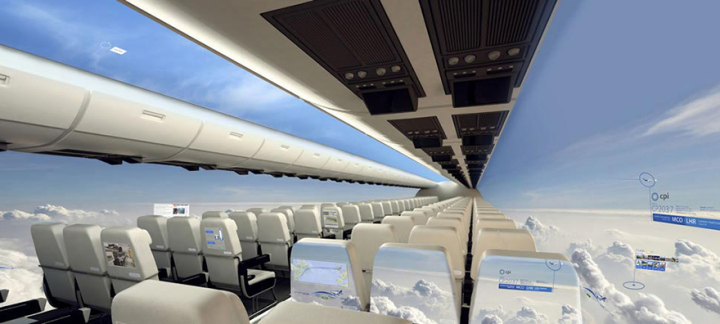Day One
It’s 530am as the bus rolls into Arequipa, Peru’s second largest city. We won’t be here long as we’re literally dumping one of our small packs and embarking on yet another bus for a two day tour of the Colca Canyon.
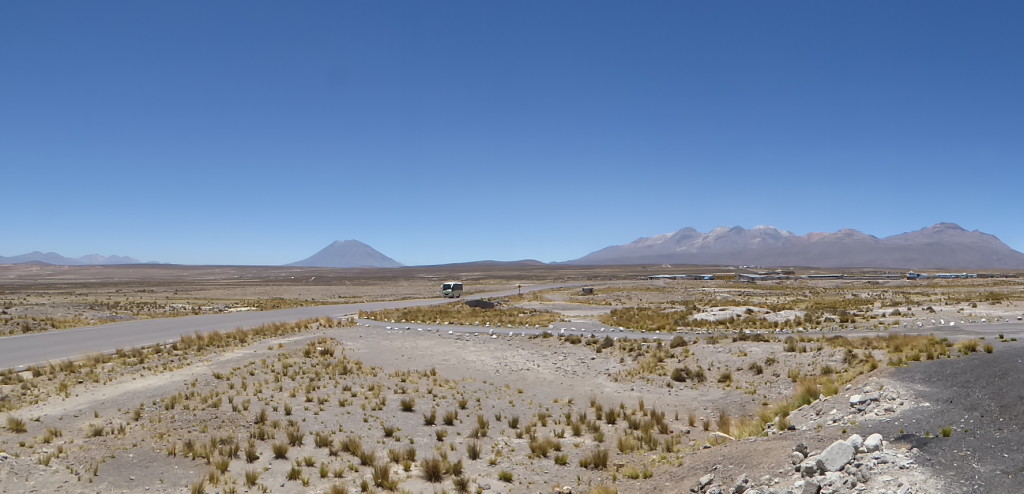
The bus pulls up outside or hostel with ease, for once we’ve booked a hostel that’s easily accessible for our bus. Most older cities in Peru had no forward planning. Back in the days of horses and carts no one would have dreamed that one day a 40 seater coach would roll down the street.
We’re checked in and offered breakfast in the gardens before the tour bus for the canyon arrives. It’s a nice place and apparently Casa De Avila runs Peruvian cooking classes.
We barely get breakfast down and the bus has arrived. Bidding our new hostel goodbye we leave our bag to reunite with after the tour and climb back onto yet another bus.
The climb out of Aqequipa takes us around the three mountains that surround the city and up to altitudes of over 4000m above sea level. We’re quite used to the high altitudes now, they no longer make it as hard to breathe as the once did in the early stages of our journey.
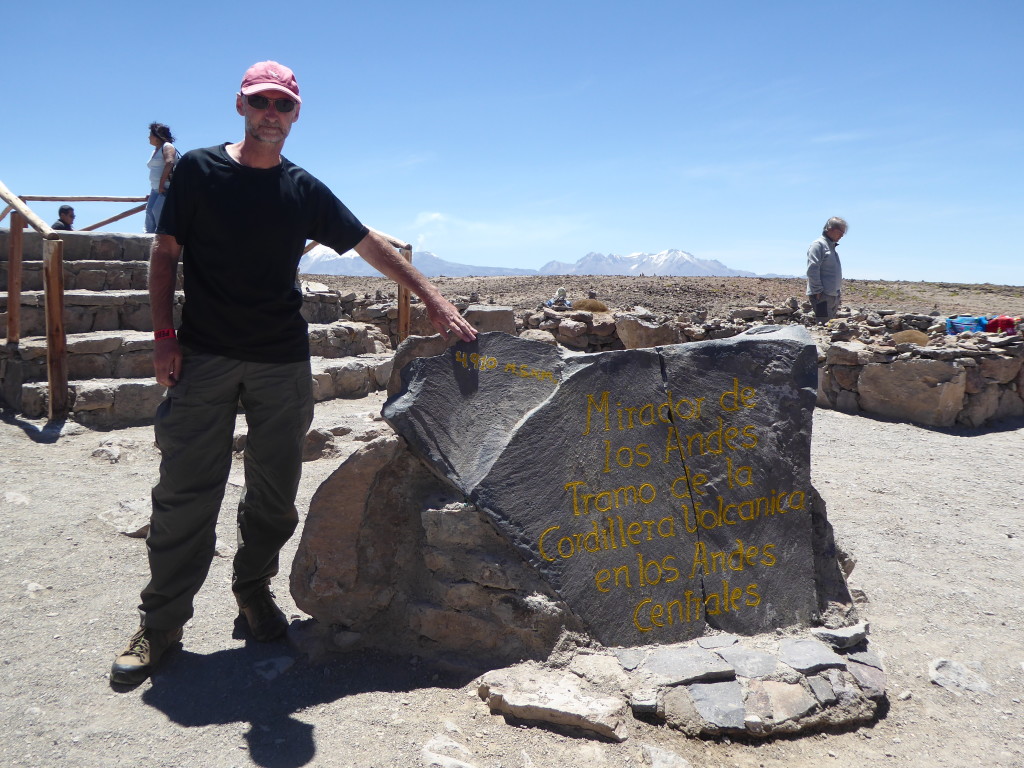
The guide is good, but I’m finding the commentary a little repetitive. Yes I understand that it’s in both English and Spanish but to be going over and over the same information just worded slightly differently leads me to believe that this guy just likes the sound of his own voice. Elena tells me he’s just doing his job, which I guess is true, maybe it’s all the long bus rides I’m just a little tired today.
The comfort stops are helpful but what I don’t get is the fact that there’s a 1 sol charge for using the toilet for “Maintenance” yet there is no toilet paper. I refuse to pay and just barge in and take care of business #1 only for now..
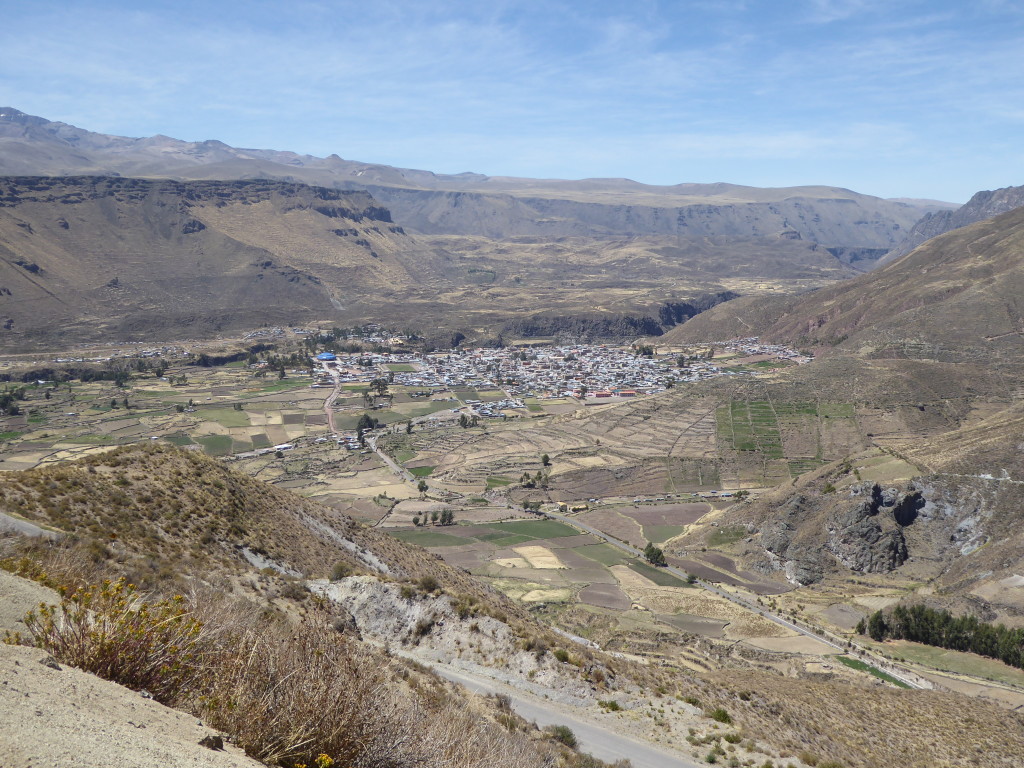
The trip into Chivay where we’ll be stopping for lunch is breathtaking, as we climb down off the plateau and descend into the terraced lands of the ancient Inca people. I can only imagine what it would have been like in the days gone by.
Lunch is a magnificent spread of all things Peruvian. I still haven’t tried the famous Cuy (Guinea Pig) but don’t see it on any dish here. Maybe it’s a bit too wild for the tourists, but make my words, somewhere out there is a pig with my name on it.
This afternoon we’re off to another village to check out the upper canyon and take a stroll down to see ancient Colca’s. These huge holes in the side of the canyon walls served as an ancient refrigerators. As the winds and water churned through the the narrow passage of the canyon it kept the food chilled and slowed it from spoiling.
The upper Colca area is rich in mineral soils and rich in a diverse range of agricultural produce. With over 5000 varieties of potatoes and countless corn types the area was once prised by the Inca, now it’s prised by the tourist coming to see condors in flight and bask in the history that once graces this valley.
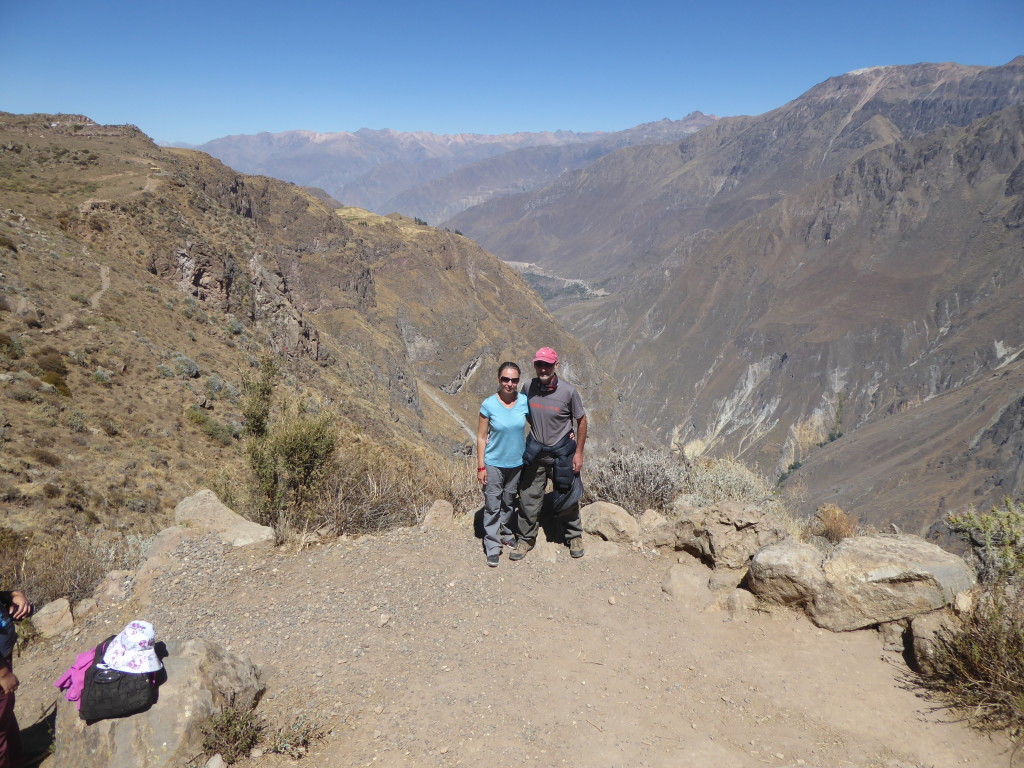
With many earthquakes and volcanic eruptions it’s no surprise that there are numerous hot springs in the area and the closest town churn water out of the round at a constant 84 degrees. The small entry fee of 15sol makes them more than affordable and an attractive place to be once the sun dips low in the sky. Included in the entry fee is a key to lock your valuable away.
Sitting in the pool chatting to a guy who’s buying a couple of motorbikes to travel from here back to the states we notice a zip line high above us. It’s another of the attractions that now bring the young at heart into the valley. As for me, I’ll just sit here in the warmth of the pool sipping on my ice cold beer.
Our quaint little hotel for the night is Pozo Del Cielo, an old monastery overlooking Chivay township and right opposite the observatory. If you get here early enough you can book the observatory, they take an English speaking tour at 6.30pm. Unfortunately for us we arrived back from the springs too late to book as we were unaware of this little hidden treasure.
Day Two
We’re up early as we need to get from the upper canyon into the lower section to see the condors that take flight and catch the thermal up drafts from the gorge deep below. .
Our first stop was to watch some local girls perform traditional dancing in a small village north far from Chivay. Like a lot of old villages the town is flanked by a square lined on one edge with a church. The young girls swirl and twist, their dresses billowing out . Each dancer has their own unique embroidered design.
It’s not long before we are back on the bus and heading up hill. One would have thought they we would be going downhill as we were following the river, but at the canyon gets narrower we are forced to go higher to the cliff tops.. The road twists and contorts itself clinging to the cliff face as we reach the vantage point for the best opportunities to view the magnificent creature that he Inca people valued so highly, the mighty Condor.
This is what we had all come to see. There where plenty of busses scattered along the sides of the roads filled to sightseers doing exact the same as us,all trying to capture that single moment when the Condor takes flight and sours just metres away from your lens. It seemed all the great vantage points were taken and we wouldn’t be able to capture our own special moment.
Then it happened, someone shouts “Condor”, and everyone is scrambling to the edge of the cliff to snap a shot. Away in the distance I see my own Condor and quietly raise my lens and snap the shot I’ve been waiting to see. One of the most graceful birds of prey in the world. The Andean Condor. Finally I have my moment frozen in time, my souvenir hunt of the Condor is done.
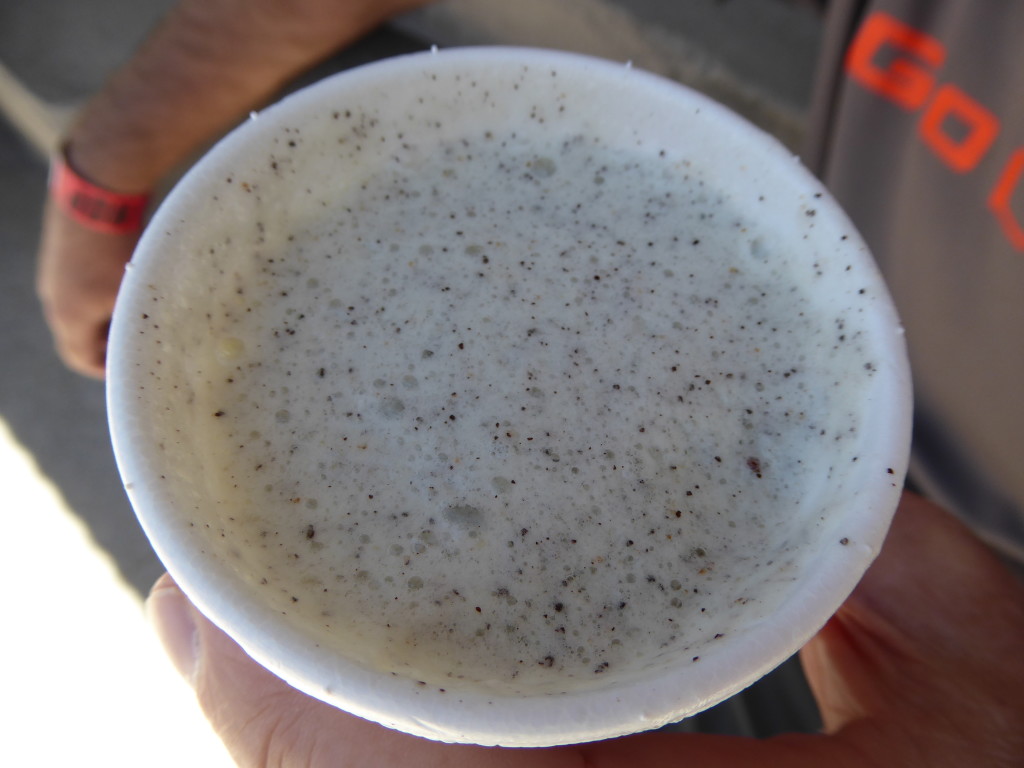
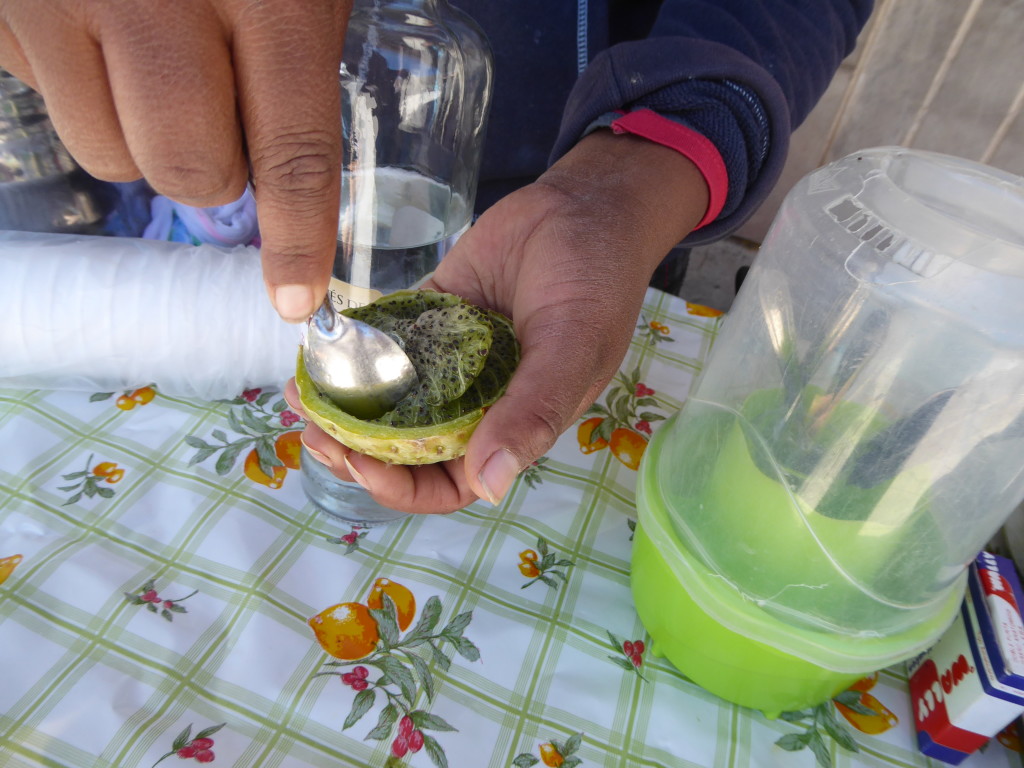
As a celebration of a successful day spotting the condors our driver stops in a village where we’ll get to try a local beverage. Colca Sour is similar to the national drink Pesco Sour and is made in a similar way. The strangest ingredient is the fruit which comes from a cactus.
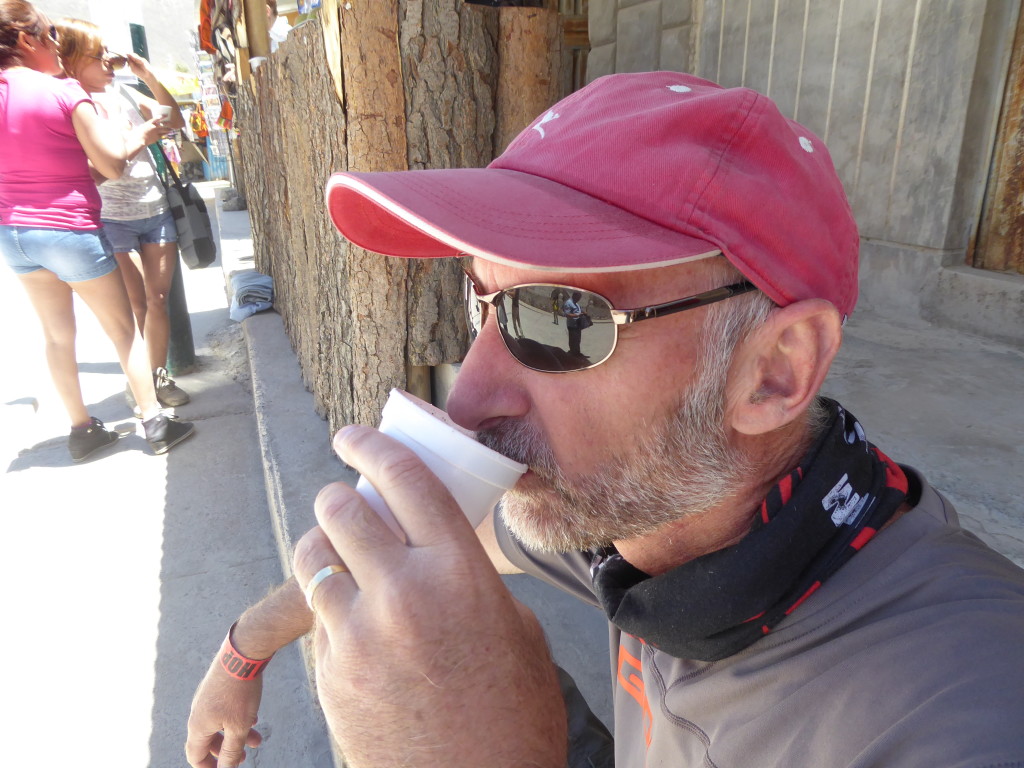
The lady making the drink for us asks us to try the fruit. Yup, I know where it now gets the sour part of its name, the fruit is not unlike a sour lemon but it hasn’t got the same acidic bite that a lemon leaves in your mouth.
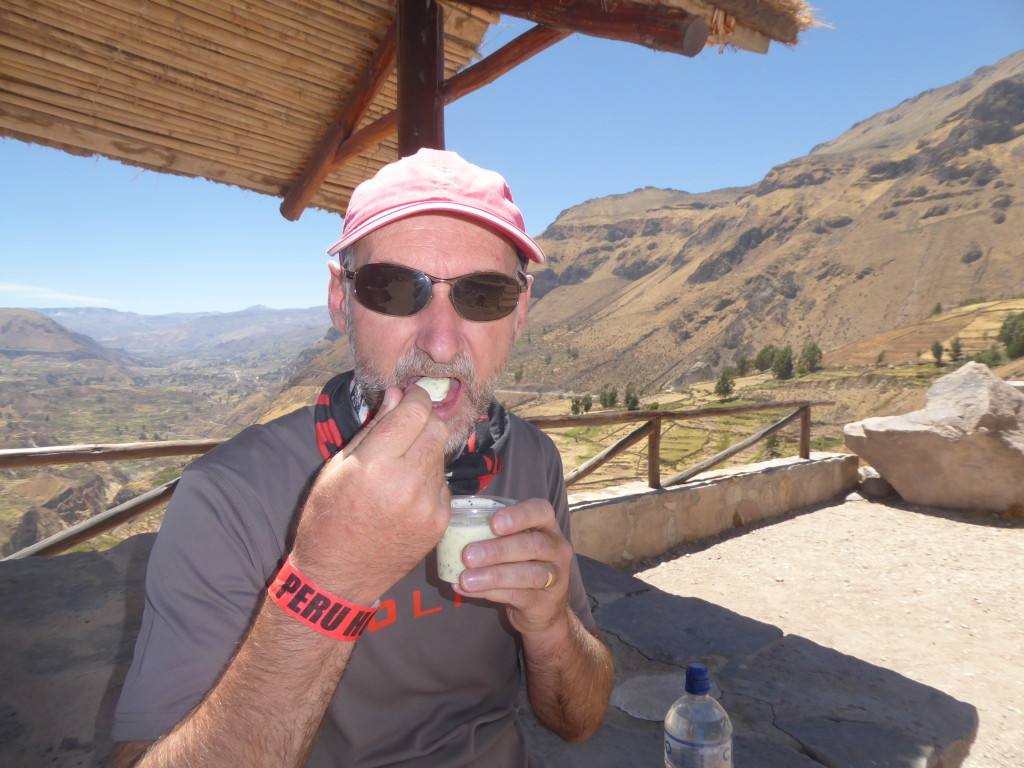
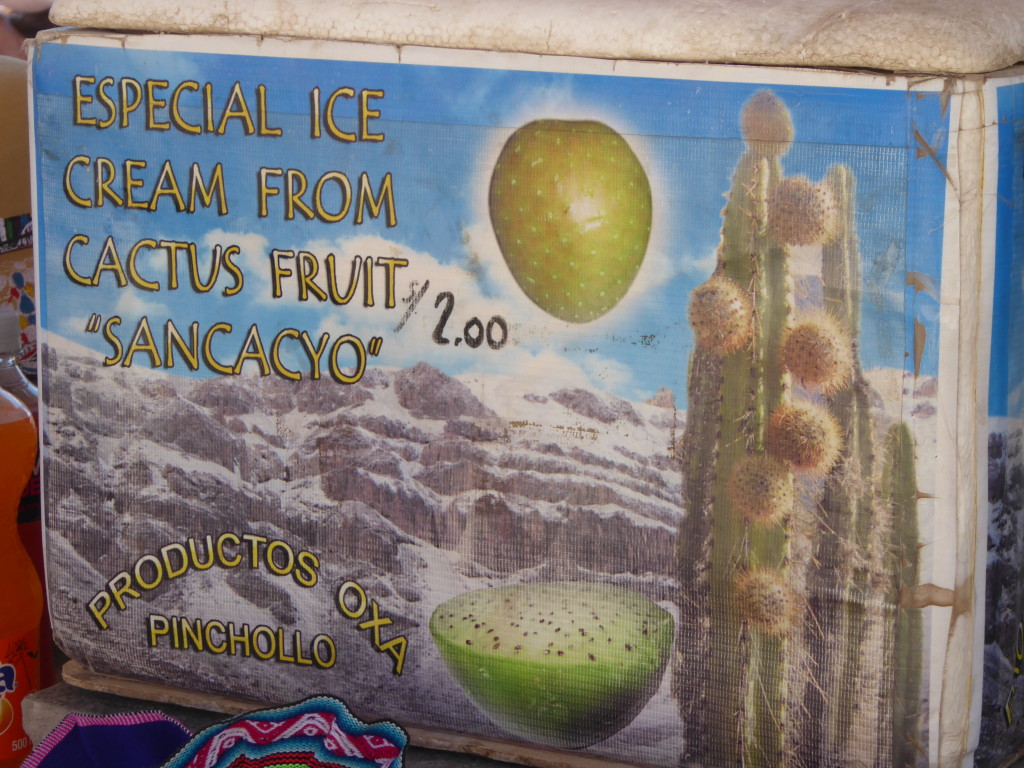
If an alcoholic beverage isn’t your thing, the locals us the same fruit to make ice cream, thrust me it’s delicious. How do I know? Well Elena’s not a fan of ice cream, yet she returned to the kiosk to buy her own after taking one mouthful of mine.
I guess the hardest part of the Colca Canyon experience is getting there. Having seen so much desert through Bolivia, seeing more desert didn’t impress us, but if this was the first desert area that you would see I’m sure it would be spell-bounding to you.
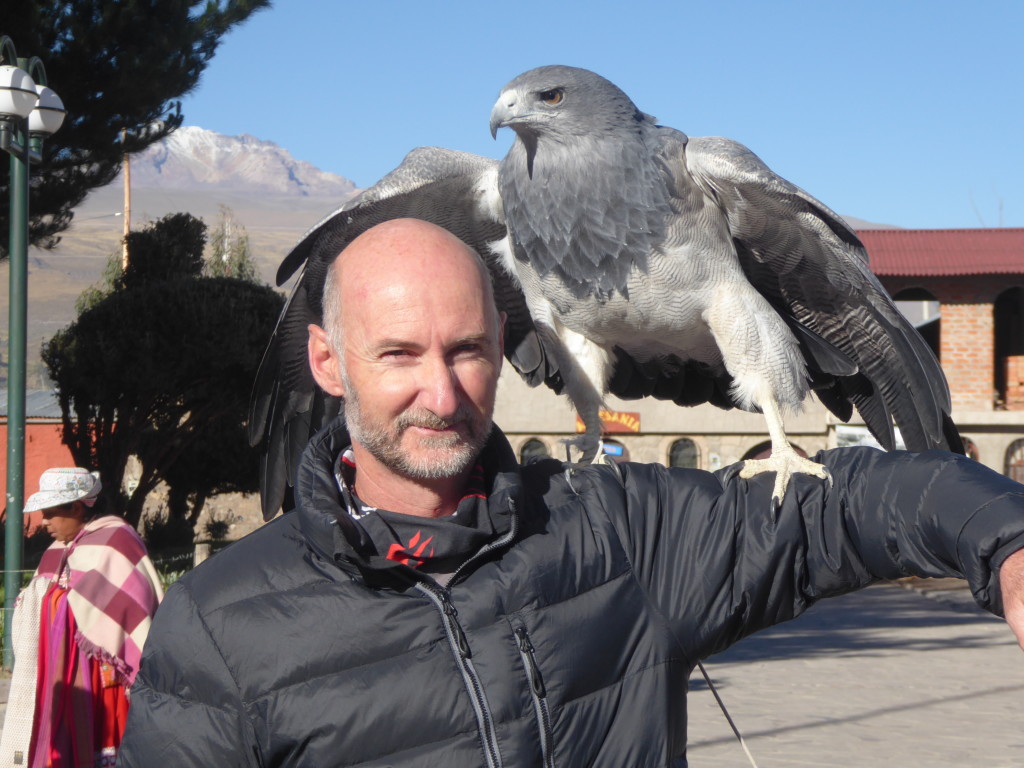
It’s dark on return and not really knowing Arequipa, we meander to the main square for something to eat.
Reflecting on the trip I prefer the ruggedness of the Colca over Machu Picchu. The Colca allows you to imagine the fast scale of the Inca and to see the ruins in a natural state, some terraces still being used and some crumbling away. Where as Machu Picchu gave me more of a sense of a maintained and almost manufactured theme park.
If you’re coming to Peru, make sure you spend a couple of days in the Colca Canyon, if I ever return I’d like to spend a week here and travel deeper into the canyon on a motorbike….. Hmmm, I feel a bucket list being created for the next trip to South America forming.
